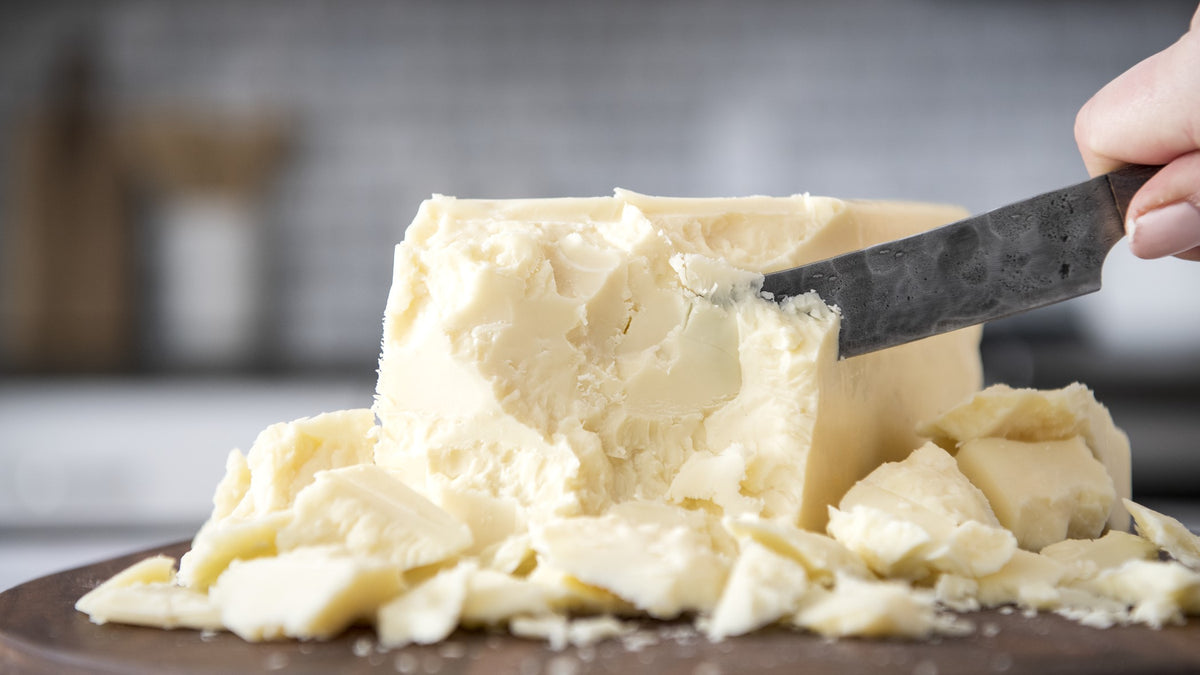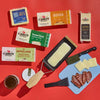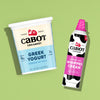
How Long Can Cheese Be Left Out of the Fridge?
Cheese is a staple in many households, but have you ever wondered how long it can be left out of the fridge before it goes bad? The answer may surprise you, as it depends on the type of cheese. Hard cheeses, such as cheddar and Parmesan, can last longer at room temperature than soft cheeses, such as mozzarella or cream cheese. However, you must account for several other factors too, like how the cheese is made or how fresh it is.
Let’s take a closer look at the different textures of cheese, their shelf lives, and the best ways to store them to ensure they stay fresh and safe to eat.
What are the main types of cheese texture?
Cheese comes in a wide variety of textures, from hard and crumbly to soft and creamy. The four main categories of cheese texture are hard, semi-hard, semi-soft, and soft.
Hard Cheeses
Hard cheeses, such as Parmesan and Gruyere, are aged for longer periods of time and have a distinct, crumbly texture. These cheeses are made by removing most of the whey from the curds during the cheesemaking process, which leads to much of the moisture being removed. They are then either brined to create a hard rind or waxed and aged for between two and 36 months (and sometimes even longer)!
With a longer aging process, you can usually count on hard cheeses to have more complex flavors and a texture best for crumbling or grating.
Semi-Hard Cheeses
Semi-hard cheeses, like cheddar and Swiss, are aged similarly to hard cheeses after pressing the curds to remove most of the whey. Semi-hard cheeses typically have a firm, but slightly springy texture and are dense in consistency. As the name suggests, semi-hard cheeses have a slightly softer texture than hard cheeses, but are still firm enough to be sliced, grated, or cubed. These cheeses are aged anywhere from one to six months, giving them a milder taste than hard cheeses and making them perfectly versatile for nearly any cheese need. Cabot ages our cheddars from 2 - 3 months (Cabot Mild Cheddar) up to two or more years for our Premium Specialty Cheddars like Old School, Clothbound or 5-Year Cheddar.
Semi-Soft Cheeses
Semi-soft cheeses, on the other hand, are a bit softer in texture and typically have an edible rind that forms in the short aging process. With a ripening period of only 30-90 days, these cheeses have a higher moisture content and a wider range of flavor profiles based on the length of the aging process. Cheeses like manchego, Gouda and provolone fall into this category - easy to slice, with a creamy texture that makes them the best for melting.

Soft Cheeses
Lastly, soft cheeses (also called fresh cheeses) are more delicate and creamy, made from fresh curds that have not been pressed or aged. These cheeses have the highest moisture content of them all, ranging from grainy textures (like cottage cheese) to smooth and spreadable (like cream cheese), and many others in between. Milder variants include mozzarella and burrata, but more pungent cheeses like feta are also made fresh. This versatility makes soft cheeses fun to experiment with, from spreading on a slice of bread to crumbling over a summer salad.
How long can different cheeses be left out of the fridge?
Now that you know the different textures of cheese and how they’re made, let’s apply that to what we know about food safety.
The U.S. Department of Health doesn’t recommend keeping any perishable food sitting out of the fridge for more than two hours — and that’s certainly the case for soft cheeses, like cottage or cream cheese, brie, or fresh mozzarella. This is because they have a higher moisture content and are not aged, making them much more perishable and susceptible to bacteria or spoilage.
Harder cheeses, on the other hand, like cheddar, Parmesan, or Gouda, will last a little longer as they have a lower moisture content - making them less likely to have bacterial growth. If they’ve been sitting out for 4 hours or less (per the Dairy Farmers of Wisconsin), you can rewrap them and put them back in the fridge. After 4 hours, look for signs of spoilage as outlined below. Typically, the harder the cheese, the longer you can leave it, but don’t push your luck - learn to spot the signs of spoilage and toss any cheese that may have gone bad.
How Do I Know If My Cheese Has Gone Bad?
If you’ve left the cheese tray out for a few hours, don’t fear - check your cheeses for signs of spoilage and apply what you’ve learned above. If you left soft cheeses out for longer than two hours, it’s best to go ahead and throw them away, as these have a much higher risk.
Check your hard cheeses for signs of spoilage like a bad smell, slimy surface, dark spots, dryness, cracks or mold - if none of these signs apply, wrap them back up and put them back in the refrigerator. Anything shredded or sliced is more easily compromised due to the larger surface area relative to the volume as opposed to a block of cheese, so be sure to inspect these items closely when left out for an extended period of time.
It’s important to note that while leaving cheese out for longer than four hours unrefrigerated may not always pose a health risk, it may change in taste, flavor, quality, or texture as time passes.
How should I store my cheese?
The proper storage of cheese has a significant impact on its shelf life. Like any living thing, cheese needs air to breathe - so wrapping it tightly with plastic wrap or a plastic bag will suffocate it and reduce its quality of flavor and its shelf life. When the wrap is too tight, as often is the case with plastic, cheeses are more likely to grow unwanted bacteria and prevents them from “breathing out” things like ammonia and other natural byproducts that need to be released.
Instead of plastic wrap for hard and semi-hard cheeses, try these better storage options, some of which we have available to shop along with all of our cheese accessories.
- Parchment paper
- Cheesecloth
- Butcher paper
- Cheese storage bags
- Bee's wrap
- Cheese vault
Soft and semi-soft cheeses (like fresh mozzarella, ricotta, cream cheese or cottage cheese) should typically be stored in their natural liquid in a plastic container.
Once wrapped, store your cheese in the vegetable drawer of your refrigerator where the temperature is both cold and stable, with consistent humidity.
Leaving Cheese Out of the Fridge: The Bottom Line
Overall, there isn’t one overall answer to how long cheese can be left out of the fridge, as it depends on a variety of factors. The type of cheese is the biggest consideration - hard cheese will last longer and is less likely to pose a health risk, while soft and fresh cheeses should remain refrigerated and only be left out for two hours at most. No matter the cheese, leaving it out for more than two hours may change the quality and taste.
How Long Will Cabot Cheese Last?
|
Cheese Type |
Recommended Storage Method |
Time It Lasts When Left Out |
|
|
Semi-Hard |
Refrigerator |
As long as 4 hours but check for signs of spoilage after 2. Rewrap and refrigerate. |
|
|
Semi-Hard |
Refrigerator |
As long as 4 hours but check for signs of spoilage after 2. Rewrap and refrigerate. |
|
|
Semi-Hard |
Refrigerator |
2-3 hours |
|
|
Semi-Hard |
Refrigerator |
2-3 hours |
|
|
Semi-Soft |
Refrigerator |
2-3 hours |
|
|
Semi-Soft |
Refrigerator |
2-3 hours |
|
|
Semi-Soft |
Refrigerator |
2-3 hours |
|
|
Semi-Soft |
Refrigerator |
If fresh, 2 hours. Low-moisture varieties like shredded mozzarella can be left out for up to 2 hours, but always check for signs of spoilage. |
FAQ
1. How long can cheese sit out before it becomes unsafe to eat?
For the best taste and quality, cheese should not be left out for longer than two hours at room temperature. Hard cheeses can be left out longer without becoming unsafe, but the quality and taste may change. Leaving hard cheeses out for extended periods may impact the quality of the product but will not—in most cases—result in a food safety issue. Soft cheeses on the other hand pose more of a risk and should be inspected closely for signs of spoilage after two hours.
2. What is hard cheese?
Hard cheeses (and semi-hard cheeses) are cheeses that have a lower moisture content than soft cheeses, ranging from 49-69% moisture.
3. How long can hard cheese sit out at room temperature?
Hard cheeses can sit out for longer than the standard two hours without becoming unsafe, but quality and taste may differ - it is not recommended to leave hard cheese unrefrigerated for longer than 4 hours.
4. What is soft cheese?
Soft cheeses have a higher moisture content than hard cheeses and have a softer texture, like brie and fresh mozzarella.
5. How long can soft cheese sit out at room temperature?
The higher moisture content creates more opportunities for bacteria to grow, making it more perishable than hard cheese – these should be discarded after two hours of sitting out at room temperature.
6. How can you tell when hard cheese has gone bad?
Spoiled hard and semi-hard cheeses may display an unpleasant smell, slimy surface, dark spots, dryness, cracked areas or mold and should be disposed of.
7. How can you tell when soft cheese has gone bad?
Spoiled soft cheeses may display a slimy texture, a yellowed color, mold, sourness, or a scent of ammonia and should be disposed of immediately.
8. How can you keep cheese fresh?
Store cheese in parchment paper, cheesecloth, butcher paper, cheese storage bags, or bees wrap in the egg or vegetable drawer of the fridge.
9. Where can I buy Cabot Cheese?
Use our Store Locator to find a store near you or visit our online shop to purchase delicious Cabot cheeses, delivered right to your door!
10. Where can I buy cheese storage items?
Shop cheese storage and so much more on our cheese accessories page.

















